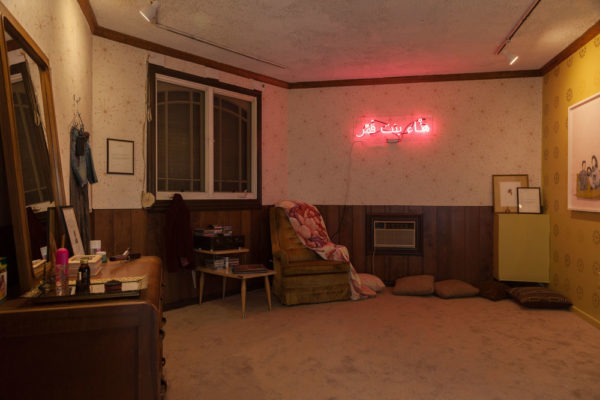Just inside the house comprising the Women’s Center for Creative Work is a cozy den that, except for its moody lighting and nostalgic decor, seems to fit right into its residential setting. Though appearing to have long existed in its current furnished state, this room was a white-walled gallery before Yasmine Diaz transformed it into her poignant installation, “Exit Strategies,” recreating her teenage basement bedchamber. Attendants encourage you to make yourself at home, to spray perfume bottles, play tapes, and rummage through her drawers and binders. Yet the deceptively comfortable bicultural bedroom portends a bleak scenario. Though born in America, Diaz wasn’t afforded America’s basic rights. Her installation represents the chamber where she plotted her escape from a dire fate as her socially and religiously oppressive Yemeni Muslim parents sought to coerce her to marry against her will. Framed e-mail fragments bespeak Diaz’ desperate entreaties for help, divulging her precariousness under “threats of extreme violence if arranged marriage is refused.” Governmental assistance was not easily obtained: a chilling 2004 e-mail indicates that changing her identity in order to avoid being stalked or possibly murdered would be an arduous long shot “particularly given our country’s current severe case of xenophobia.” The suppressed story disclosed through Diaz’ intricate installation seems dramatic but reveals that forced marriage is a practice more common than one might think, oft ignored by discriminatory authorities. In her collages, face-ablated figures float amid fragmentary backgrounds of white paper and Islamic patterning, silently soliciting speculation: How many, like Diaz, shoulder pasts regretfully obliterated in order to exist freely? How many Americans suffer connubial immurement—or worse?
Women’s Center for Creative Work
2425 Glover Place
Los Angeles, CA 90031
Show runs through Aug. 3


